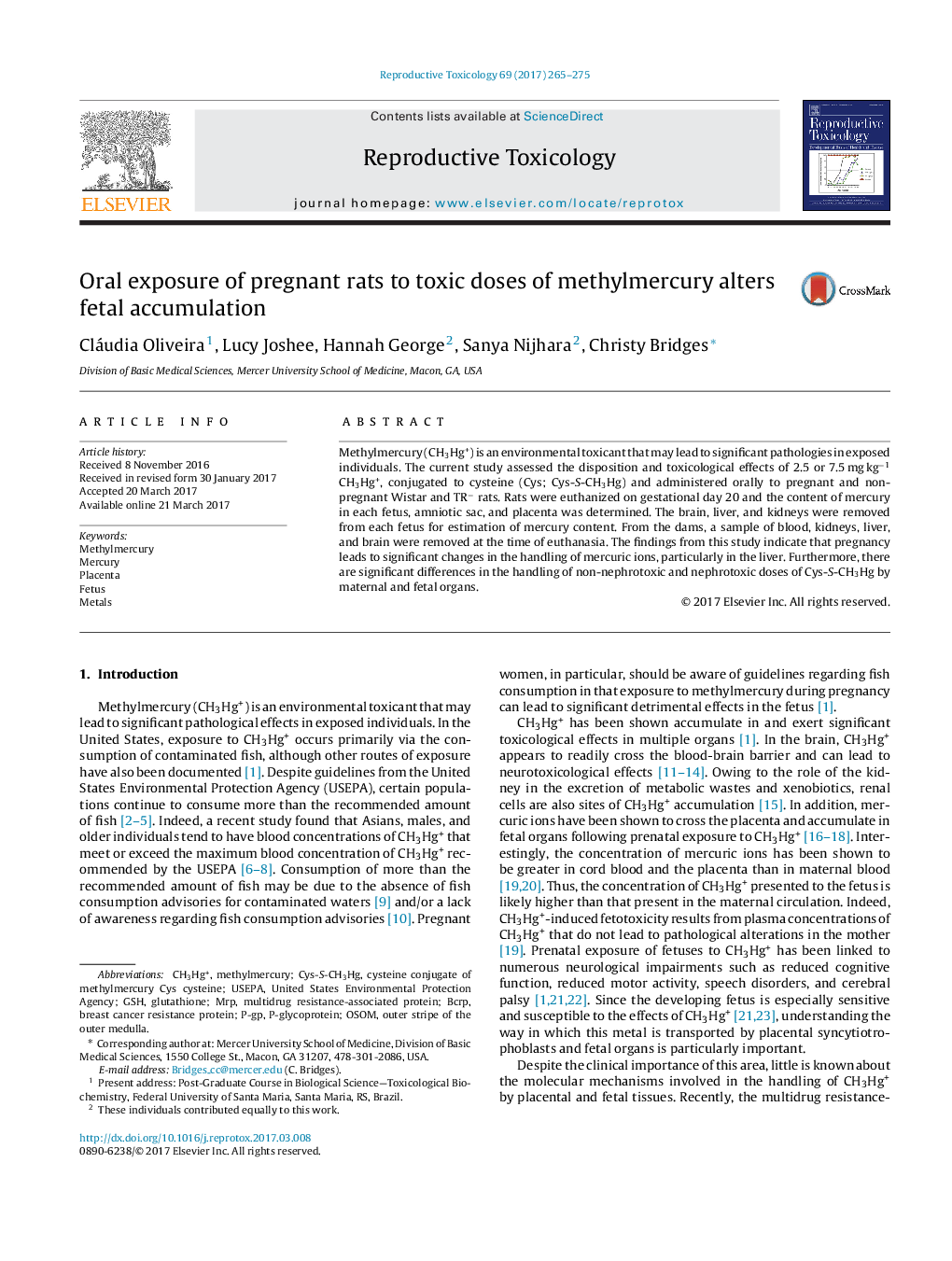| Article ID | Journal | Published Year | Pages | File Type |
|---|---|---|---|---|
| 5561602 | Reproductive Toxicology | 2017 | 11 Pages |
â¢Methylmercury accumulates in placentas and fetuses following oral exposure to mothers.â¢Pregnancy alters the way in methylmercury is handled by maternal organs.â¢Increased maternal dose leads to a greater increase in renal accumulation in fetuses.
Methylmercury (CH3Hg+) is an environmental toxicant that may lead to significant pathologies in exposed individuals. The current study assessed the disposition and toxicological effects of 2.5 or 7.5 mg kgâ1 CH3Hg+, conjugated to cysteine (Cys; Cys-S-CH3Hg) and administered orally to pregnant and non-pregnant Wistar and TRâ rats. Rats were euthanized on gestational day 20 and the content of mercury in each fetus, amniotic sac, and placenta was determined. The brain, liver, and kidneys were removed from each fetus for estimation of mercury content. From the dams, a sample of blood, kidneys, liver, and brain were removed at the time of euthanasia. The findings from this study indicate that pregnancy leads to significant changes in the handling of mercuric ions, particularly in the liver. Furthermore, there are significant differences in the handling of non-nephrotoxic and nephrotoxic doses of Cys-S-CH3Hg by maternal and fetal organs.
